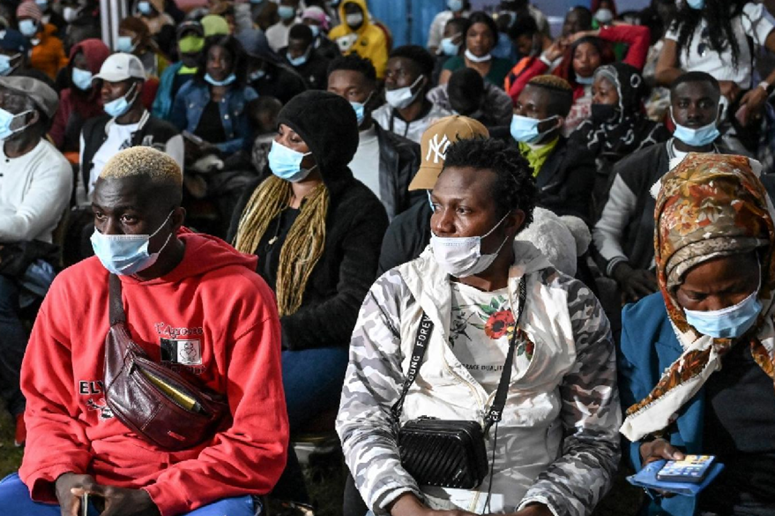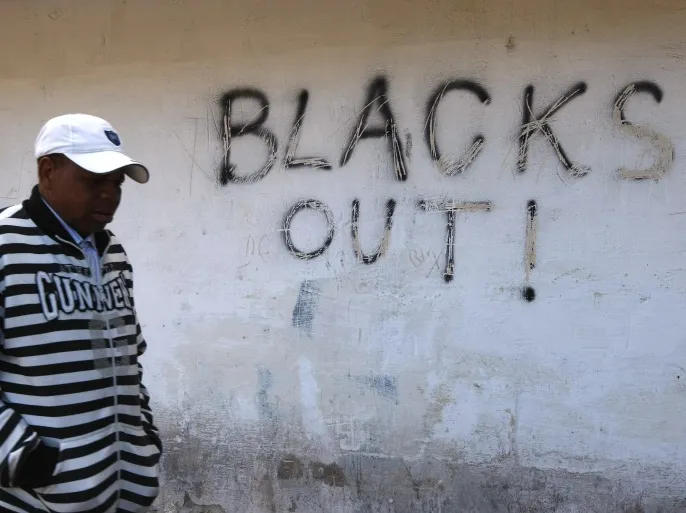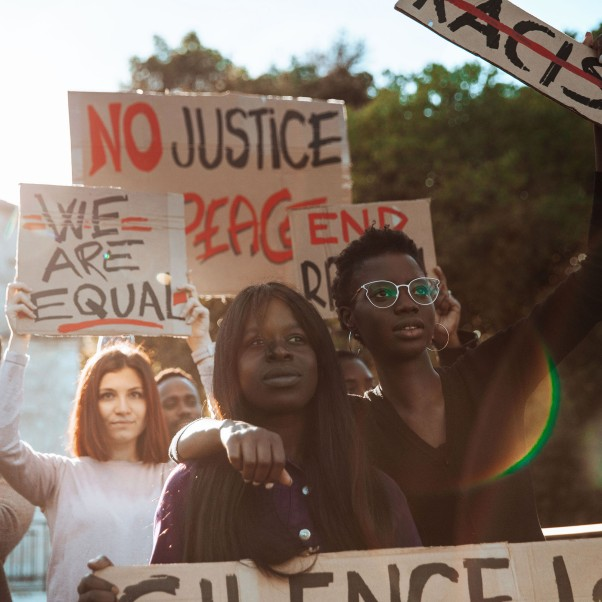The disease of white African racism in the Maghreb countries

The diseases of the culture of racism that appear in the behavior and discourse of North African countries are the product of a network of ideological institutions, most notably the school and extremist religious discourse (AFP)
Did the citizen find no mercy except in the “dream of immigration” to escape from the nightmare of independence no less unjust than yesterday’s colonialism?
With great bitterness, one of the illegal immigrants said as he emerged alive from the adventure of death after crossing the Mediterranean from the shores of Tunisia , and having set his feet on the soil of the Italian island of Lampedusa, “Does racism exist in North African countries and not in European countries?”
Yes, this phrase makes us think well, and deeply, about the absence of “hospitality” and the absence of the meaning of “guest” and the fear of the other, even if he is from us, from our own continent, from Africa, and the fear of the other who is part of us, and the end of the philosophy of “hospitality” is not a product of It is only an economic crisis, but its roots go beyond that.
The African human migrations and displacements that have occurred and are occurring on the continent during the last two decades, and the resulting violence, displacement, deportation, killing, buying and selling, make us wonder: Are our Maghreb peoples truly free from the epidemic of racism, especially towards black-skinned Africans?
In light of what is happening under the cameras and live, we are presented with a strange but fundamental and philosophical question: Have the Maghreb people forgotten that they are Africans?
It also brings us to another question: Have the North African Maghrebs forgotten, when they treat black Africans with such brutality, what they suffered from the brutality of European racism in the north of the north?
Is the North always racist towards the people of the South? The south is relative and the north is also relative.
The novel has written many chapters on the plight of racism that the Maghreb immigrant suffered in France in particular, from the novel “The Simple Past” by Driss Chraibi, through the novel “Sunstroke” by Rachid Boudjedra, all the way to the play “Mohammed, Take Your Bag” by Yacine, and other immortal texts in the narrative. Maghreb novelists in Arabic and French, and such work was also carried out by cinema with much intelligence and genius. It is possible to point out the films of Lakhdar Hamina, Merzak Allouache and others. The song was not late in presenting this racism, from the songs of Sheikha Rimiti to the song of the Moroccan artist Abdel-Wahab Doukkali, “Manparnas”, which is one of them. One of the immortal songs that strongly expressed this racism, which reaches the point of murder and physical attacks.

For a century or more, North African elites, regardless of their political, intellectual, and linguistic sensitivities, did not stop denouncing the racism experienced by migrant workers in Europe, especially in France. Politicians, intellectuals, academics, artists, and media professionals condemned and wrote against this barbaric, inhuman, racist behavior.
There is not a single Maghreb family in which one of its members was not a victim of European racism, until the common citizen began to believe that the white man’s genes contained something of this racism, and in the face of the European white man’s racism was the Maghreb, even if his skin color was bright white, he saw it as brown or even black. In the presence of the whiteness of the racist European man's skin.
Half a century after the independence of the countries of sub-Saharan Africa, half a century of independence full of coups and a succession of corrupt military regimes in these countries, half a century of civil and tribal wars, the end of which was the arrival of “Al-Qaeda”, “ISIS”, the Somali youth and other Islamic terrorist organizations to this region. And with it, the open slave markets returned with force.
In light of these strife produced by African military regimes that nationalized independence for the benefit of beneficial and corrupt groups, the African citizen found no mercy except in the “dream of immigration” to escape from the nightmare of independence no less unjust than yesterday’s colonialism?
Thousands of poor African citizens pay what they may collect over the years, from a few dollars to smugglers and human traffickers, in the hope of reaching the north of the continent, to the home of their brothers in the north as a first stage towards the north, Europe?
The house of the Brotherhood or the house of hell?
Many die on the way, and many are sold like flocks of sheep in camps, camps and markets. They are transferred from one hand to another. Girls and women are raped without conscience or deterrence. They become pregnant and give birth during the ordeal of the dream of reaching the north.

An African escaping the hell of his country south of the Sahara discovers that the North is two Norths, an African North and a European North? He also discovers that in both Norths, the whip that falls on the body is no different, and the language may differ, but it carries the same charges of hatred and racism.
Those who follow the chapters of the hell that sub-Saharan Africans suffer from their brothers in the countries of the northern continent wonder: Did these white Africans, that is, the Africans of North Africa, learn the lesson of racism from what they tasted from the culinary arts of French and European racism?
Is racism white? Racism has no color, but in the case of Africa, between its north and south, skin color plays a major role in this, as it is its firewood and fuel.
From what grass does the monster of racism feed and from what source does it get some of its fuel? Unfortunately, such a racist culture may be found in the collective popular cultural imagination, which links the slave with the black-skinned man. Some of this racist behavior has a presence in the traditional Salafist culture, as many imams and preachers are still on television channels, on YouTube, and on social media. In the pulpits of air-conditioned mosques, they produce speeches in which they speak, as we are in the 21st century, about the nation, the slave, captivity, conquests, and other concepts that are foreign to our present time, the time of human rights and citizenship.
Unfortunately, no one denies that our current environment, which is extremist and far from the morals of the true religion that our fathers knew and our grandfathers practiced, feeds some ideas of racial racism against blacks, sexual racism against women, and doctrinal racism against the Jew.
Based on this sick collective popular imagination, it seems as if there is something like tolerance for the racism we see towards black Africans when they arrive in North Africa, and human memory preserves terrifying scenes of convoys of black Africans being herded like a herd, women, men and children, in Libya, from one camp to another. In the absence of all human and moral values, the same thing is what illegal African immigrants are experiencing in Tunisia, in the city of Sfax and elsewhere, and some of them have even stated, saying, “These black Africans are distorting the cultural and human structure of Tunisia,” and what we have also seen in the case of Africans arriving to Morocco in terms of Those savage scenes as they climbed the fence separating Morocco from Ceuta, Spain, and how they were dealt with in a manner similar to dealing with monsters, but even more horrific.
Every time the Maghreb discourse justifying racism tries to explain this behavior against Africans coming from sub-Saharan countries by saying that they are immigrants who entered the country illegally, and their presence in the country is illegal.

The diseases of the culture of racism that appear in the behavior and discourse of North African countries are the product of a network of ideological institutions, most notably the school, extremist religious discourse, the discourse of some parties belonging to the extreme right, and the media obsessed with scandals.
Amin Zaoui is a writer and thinker

